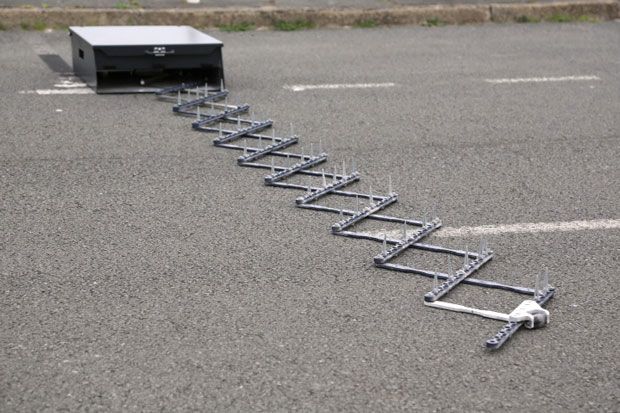Imagine driving along and seeing a strip of sharp metal spikes laid across the road ahead. It might sound a bit alarming at first, but road spikes are actually a tool designed to keep things safe on the roads. While they may seem intimidating, especially if you’ve only seen them in action during a police chase in the movies, their purpose is all about controlling potentially dangerous situations without putting anyone at unnecessary risk. Let’s dive into how these spikes work and why they’re not as scary as they seem.

What Are Spikes on the Road?
Spikes on the road are also called “tire spikes” or “spike strips.” They are long strips with sharp, pointy metal spikes that are laid across the road, often by the police or traffic enforcement. The idea is that when a car drives over these spikes, they puncture the tires, causing them to deflate. But don’t worry, they don’t pop like balloons—it’s more of a slow deflation that forces the driver to stop.
Why Are They Used?
You’ve probably seen these in high-speed car chases in movies, but they’re not just for dramatic effect. In real life, spike strips are used to stop vehicles that are refusing to pull over for the police. If a driver is speeding away or trying to avoid being arrested, the police might deploy these spikes to safely bring the car to a stop without having to get into a dangerous chase.
Spike strips can also be used at toll booths, parking lots, or rental car return locations. In these cases, they are often designed to only damage tires if someone drives the wrong way or tries to bypass paying. The spikes can retract or are only facing one direction, so you won’t have any problems if you’re driving the correct way.
How Do They Work Without Causing Accidents?
Now, you might be thinking, “If spikes on the road are designed to puncture tires, doesn’t that sound dangerous?” Surprisingly, they’re engineered to minimize danger. The spikes are designed to slowly deflate the tires instead of making them blow out. This gives the driver enough time to safely bring the vehicle to a stop without losing control.
The strips are also typically deployed in controlled environments by trained officers, so they aren’t just thrown out on busy highways randomly. They’re part of a planned effort to safely stop a vehicle that might be putting others at risk.
Where Might You Encounter Spikes?
Apart from police chases, you might encounter road spikes in places where drivers aren’t supposed to go. For example, in some parking lots or at car rental returns, you’ll see a sign saying something like “Do Not Back Up—Severe Tire Damage.” That’s because they’ve installed spikes that only allow you to drive forward. If you try to reverse, your tires will hit the spikes, and you’ll end up with flat tires.
In some countries, you might also see spikes used at toll booths or other secure areas to stop cars from sneaking past without paying.
Spikes on the road may seem a bit intense, but they serve an important role in keeping roads safe. They’re a tool to stop vehicles when other options might be too risky or ineffective. Whether they’re being used in police situations or to manage traffic in parking lots, the goal is always to prevent dangerous situations while giving drivers enough time to react.
So, the next time you see a warning about spikes, you’ll know exactly what they are and why they’re there!